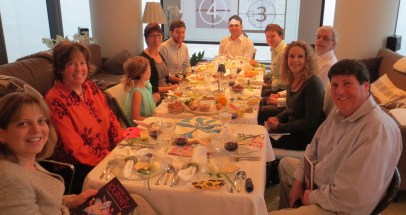
Alan S. Yoffie is the author of Sharing the Journey: The Haggadah for the Contemporary Family, published by CCAR Press. In this interview, he shares insights on creating a meaningful and inclusive Passover experience.
What inspired you to create Sharing the Journey: The Haggadah for the Contemporary Family?
When my son, a recent college graduate, announced that he was bringing a young woman of another faith to our seder, I wanted her to be comfortable with our traditions and to embrace our family’s celebration of freedom. When I was not able to find a Haggadah with a special focus on the inclusion of persons of other faiths, I decided to create one.
Was there something new you learned while working on the book?
We tell the story of the Exodus using symbols—some traditional and some new ones reflecting our contemporary times. A symbol I included in the Haggadah that I had not used in my family seders was the return of the second half of the middle matzah to the seder plate as a symbol of hope for the oppressed and a symbol of the responsibilities of freedom for free people.
Sharing the Journey was illustrated by Mark Podwal, z”l. What role does the artwork play in the Haggadah?
My goal for artwork for Sharing the Journey was to amplify the voice of the text, add richness and beauty to the seder, and for the artwork to be a learning tool that encouraged seder participation and discussion. I was fortunate that a library curator at Yale University was able to provide me with the contact information for Mark Podwal, a prize-winning artist with a strong color palette, a sense of Jewish history and a demonstrated ability to tell stories through his artwork. His illustrations greatly enhance the Sharing the Journey seder experience.
What are some tips for creating Passover seders that are engaging and meaningful for all ages?
Welcome a little chaos while engaging children and encouraging discussion. Introduce a contemporary reading or question about freedom every year. At the conclusion of the seder, ask everyone (who is willing) to share a blessing they have received or a special family memory of Passover. Make the story of the Exodus your own.
Alan S. Yoffie is the author of Sharing the Journey: The Haggadah for the Contemporary Family published by CCAR Press. Mr. Yoffie wrote The Seder Leader’s Guide, also available from CCAR Press, which includes two CDs (instrumental and vocal) that provide a “musical companion” for the Seder.














